The Radicalisation Awareness Network (RAN): Yesterday, Today, and Tomorrow
The European network for prevention practices and Italy: an assessment between lights and shadows
by Luca Guglielminetti, RAN Ambassador for Italy
THIS ARTICLE WILL FEATURE IN #REACT2024, THE ANNUAL REPORT ON TERRORISM AND RADICALISATION IN EUROPE (ED. START INSIGHT), WHICH IS CURRENTLY IN THE WORKS
This year marks the conclusion of the ‘Radicalisation Awareness Network – RAN’, the European network for prevention practices established in 2011 by the DG Home of the European Commission, which will be replaced by the ‘EU Knowledge Hub on Prevention of Radicalisation’. Thus, it is time to evaluate this experience, in particular in our country, and open up a discussion on the future consolidation of policies and practices aimed at preventing and countering radicalisation leading to violent extremism and terrorism (P/CVE).
These policies and practices involve challenging and effective cooperation between various actors, domains and approaches, such as security and resilience, repression and trust-building, secrecy and transparency, retributive justice and restorative justice, state institutions and civil society, national and local authorities, media and academic institutions, former terrorists and victims. These pairs already represent unresolved challenges, sparking controversy and, sometimes, even bitter disputes throughout Europe. However, in Italy P/CVE practices are now established. The question is whether we can transition from the current state of fragmentation to one of strategic valorization in the future.
1. WHAT IS RAN
Italy, as we will see in the second chapter, is one of the few State Members of the European Union (EU) without a national strategy or legislation on P/CVE, it is appropriate to begin by introducing what the Radicalisation Awareness Network (‘RAN’) is and how it functions, for the benefit of those unfamiliar with it[1].
The Radicalisation Awareness Network, or RAN, is a European network focused on practical approaches for preventing violent extremism and terrorism, boasting over 6,000 participants. Launched in 2011 by the European Commission, RAN is fully funded by it. While organizationally based at the Department for Migration and Internal Affairs (DG HOME) of the European Commission, its activities are implemented and coordinated by a consortium, subject to renewal through competitive bidding every four years.
RAN’s aims to establish networks and exchange information among experts from various prevention sectors and countries in order to prevent and counter violent extremism (P/CVE). Its purpose is to converge empirical and practical knowledge, along with new scientific findings, and make them available to practitioners through nine working groups:
- Communication and Narratives (RAN C&N): Focuses on developments and trends in extremist communication online and offline, as well as ways to counter them.
- Youth and Education (RAN Y&E): Centers on supporting teachers and the education sector in managing radicalisation.
- Rehabilitation (RAN REHABILITATION): Concentrates on deradicalisation and exit programs, as well as social reintegration services inside and outside prisons.
- Families, Communities & Social Care (RAN FC&S): Addresses the best ways to assist young people, families, and ethnic or religious groups facing radicalisation or any kind of vulnerability.
- Local Authorities (RAN LOCAL): Focuses on exchanging approaches and strategies involving different local actors coordinating prevention in urban safety.
- Prisons (RAN PRISONS): Analyzes the impact of prison systems, reintegration programs, and targeted interventions for convicted terrorists.
- Police and Law Enforcement (RAN POL): Identifies effective police approaches, including training, social media usage, and building trust and relationship-based approaches to work with families, communities, environments, and neighborhoods.
- Victims/Survivors of Terrorism (RAN VOT): Maintains a network of terrorism victims interested in P/CVE activities and organizes the European Day of Remembrance for Victims of Terrorism on March 11 every year.
- Mental Health (RAN HEALTH): Raises awareness among healthcare and social professionals about their role in identifying and supporting individuals at risk of radicalisation.
Participation in the working groups involves public calls for which interested individuals can apply, and their selection is based on expertise, concrete experience and country of origin. Meetings are interactive and based on examples, experiences, and practical insights, with conclusive documents containing the main results published after each session.
RAN not only publishes results but also papers providing information on research and policies related to radicalisation, extremism, terrorism, and prevention. In order to spread practical knowledge and, through a collection of practices across European countries, help experts and operators, whether part of the network or not, improve their work.
The network’s main thematic focuses and working group topics are developed in the RAN Steering Committee, in addition to online surveys sent to participants and to the annual plenary meeting.
Over the years, supplemental network components have joined: in 2016 ‘RAN Young’ dedicated to young Europeans involved in prevention activities; the ‘Poll of Experts’ for writing RAN papers and reviewing collected practices; the ‘CSEP’ program funding communication in civil society campaigns to counter extremist propaganda. In 2021, a second sectionof network, ‘RAN Policy Support’ was created, mainly for policymakers and officials in member states, separate from ‘RAN Practitioners’, preserving its nature as a network of on-field professionals. Additionally, in 2021, ‘RAN in Western Balkans’ was established to prevent radicalisation in a particularly vulnerable region. ‘RAN Ambassadors’ was intended to enhance the network’s visibility in EU member states.
RAN’s communication has evolved from a website introducing working groups, papers, and the collection of ‘Inspiring Practices’ and it gradually included channels on major social networks, newsletters, videos, podcasts, infographics, webinars, and a quarterly magazine entitled RAN Spotlight, each issue presenting a different topic.

2. RAN AND ITALY: EVOLUTIONS AND INITIAL ASSESSMENTS
This second part largely takes the form of a testimony, as the undersigned, being the only Italian, has been involved with RAN since its designing phase, back when DG HOME was engaging stakeholders in the first half of 2011. At that time, I was involved in the development of this new network, having engaged into another network promoted by the European Commission over the previous five years: the network of associations for victims of terrorism (‘NAVT’)[2].
In 2005, European counter-terrorism strategies began addressing the issue of violent radicalisation and its prevention. While recognizing that actions against radicalisation and terrorism primarily fall within the control and responsibility of EU member states, the ‘Stockholm Program during the period 2010-2014’[3] highlighted the importance and actual value of creating a European-level structure and actively involving civil society, communities, and local administrations. This structure took the form of RAN, publicly launched in September 2011 in Brussels in the presence of European Commissioner for Home Affairs Cecilia Malmström. It was the year of the uncertain Arab Spring, but the echoes of Anders Breivik’s attacks in Oslo and Utøya still persisted in the air.
On that occasion, it became immediately clear that there was a significant cultural gap between European countries in their security approach. Nordic countries focused on preventing individuals from reaching forms of social deviance that could lead them to become criminals, while Southern European countries, like Italy, focused on preventing a specific crime from occurring. For the first time the United Kingdom and its ‘Prevent’[4] program, developed in response to the July 7 2005 London bombings, provided the European Commission with the know-how for a holistic approach that involved radicalisation prevention with preventing terrorist acts.
First Cycle: 2012-2015
During the first cycle of RAN, between 2012 and 2015, I co-led with a French colleague[5], the working group on the ‘Voice of Victims of Terrorism’, participating in Steering Committee meetings, also in those of other working groups, in annual plenaries, and in the two High-Level Conferences organized by DG HOME to promote RAN’s results to political decision-makers in EU member states.
At the inaugural RAN Steering Committee meeting, we were informed that the European Commission’s agenda would incorporate the topic of radicalisation prevention into nearly all its programs and initiatives, from education and culture, to research and development, to security and justice, to citizenship and social promotion. This strategic decision resulted impactful, as it brought in light the issue of radicalisation prevention to the attention of universities, national and local authorities, and civil society organizations in Italy, particularly through European funding opportunities[6].
The most innovative aspect of RAN was its modus operandi. The Commission aimed to shape P/CVE policies and practices for prevention practitioners on the field through ‘RAN papers’ and RAN collection of practices. These would then be promoted to the political leaders of Member States during the ‘High Level’ conferences – a bottom-up virtuous circle optimizing the effectiveness of policies and practices. Many European countries benefited from this approach during those years, developing national strategies for P/CVE.
At that time, the number of Italian participants in RAN was rather limited, contrasting with 2000 participants throughout the EU in the first cycle. The term ‘radicalisation’, in the sense used here[7], was confined to the security sector, unfamiliar to Italian media and policymakers. Nevertheless, during the final seminar of the first Italian prevention project in schools, ‘Counter-narrative to Counter-terrorism (C4C)’, held in Turin in November 2014[8], Italian RAN members attempted to lay the foundation for ‘RAN Italy’. We drafted a document and initiated dialogues with the Ministry of Justice, whose Department of Prison Administration had been conducting training on radicalisation[9] for prison staff. Although RAN offered assistance and support to EU member states in creating national networks on the matter, the email to request this support was never sent.
Second Cycle: 2016-2019
The second cycle of RAN, spanning from 2016 to 2020, appeared to mark a turning point for Italy. The Syrian-Iraqi conflict was reaching its peak, causing repercussions on European soil, starting with the attack on Charlie Hebdo’s editorial office. As the conflict declined, in Europe emerged the challenging issue of returning foreign-fighters and their families.
The echoes of the January 7 2015 Paris attack brought the topic of radicalisation prevention to the forefront in Italy. For the first time, I gave an interview on RAN and related European funding. In my opinion the fact that the Catholic newspaper Avvenire took the initiative wasn’t much influential[10]. Although I was no longer coordinating a working group at that time, I was part of the RAN Expert Pool. The headline, announced with “Experts denounce”, read: “The EU Anti-Radicalism Network. Though Italy is lagging behind”[11]. In the interview, I emphasized that in Italy, terrorism remained solely a security issue for police and intelligence, without embracing the “soft power” of European P/CVE policies. This led to additional interviews and media contributions, with the initial one connecting me with Stefano Dambruoso, also interviewed in the same article.
Dambruoso, an internationally renowned former magistrate, known for his investigation into al Qaeda in Europe even before 9/11, and a parliamentarian working on the new anti-terrorism decree – later converted into Law No. 43 on April 17 2015 – advocated for stronger penalties combined with educational efforts for radicalisation prevention. This conviction materialized in a legislative proposal titled “Measures for the Prevention of Radicalisation and Jihadist Extremism”[12], of which he was the primary signatory along with Hon. Andrea Manciulli.
In the summer of 2016, discussions and hearings on the Dambruoso-Manciulli act began in the Constitutional Affairs Committee of the Chamber of Deputies. Simultaneously, in August, a study commission on jihadist radicalisation was established, promoted by then Undersecretary of Interior Affairs Marco Minniti and chaired by Lorenzo Vidino, the first researcher to delve into the Italian dimension of the jihadist phenomenon[13].
I had the opportunity to collaborate with both commissions, closely observing events. The beginning of 2017 saw the press conference on January 5 at Palazzo Chigi, where new Prime Minister Paolo Gentiloni, Interior Minister Minniti, and Lorenzo Vidino presented the Commission’s achievements. The paradox of this operation was that there were no public documents. The final report of the Commission, containing a detailed description of policies and approaches promoted by RAN, including the few activities carried out locally by its Italian participants, was classified. In the following days, only a brief and very generic summary was distributed to journalists. Thus, while the Chamber of Deputies would discuss and approve a legislative proposal on the topic in the coming months, the government document that could have informed parliamentarians was withheld, as members of the Vidino Commission were prohibited from distributing it to anyone, for it contained classified ministerial data.
As is known, the Dambruoso-Manciulli act was only approved in the Chamber of Deputies, and the end of that legislative term occurred shortly before its approval in the Senate. In the subsequent legislature (2018-2022), the text, reintroduced by Hon. Fiano as the primary sponsor in 2018, then unified with a similar proposal by Hon. Perego di Cremnago in the consolidated text titled “Measures for the prevention of phenomena subversive of violent radicalisation, including phenomena of radicalisation and dissemination of violent extremism of jihadist origin (A.C. 243 -3357-A)”[14], did not thrive.
The outcome of these events left Italy as one of the very few European countries without national legislation or a strategy for preventing radicalisation. However, the debate around that attempt immediately focused, among professionals in the field, on its merits. The legislative proposal had limitations, starting with the partial incorporation of the results of the Vidino Commission, leading some, including myself, to question its usefulness. One of the main limitations was its exclusive focus on jihadist-inspired radicalisation[15]. The second was its security-oriented structure, anchoring activities to the Ministry of the Interior and local Prefectures, while, in almost all of Europe, local authorities served as the operative pivot for the most effective P/CVE activities. This ranged from the well-known model in the Danish city of Aarhus to the ‘safety houses’ in Dutch cities, and the prevention centers in German Landers and city initiatives in Belgium and the United Kingdom.
From this consideration and the deadlock in 2014 in establishing a national network (‘RAN Italy’) with ministries, attempts were made in 2016 to initiate local prevention networks in the cities of Turin, Milan, and Udine by Italian RAN participants. Of the three cities, only Turin, after several years of informal meetings between the city administration, law enforcement, prison administration, and civil society organizations, established a Working Group on the Prevention of Violent Extremism in 2020, approving operational guidelines[16] following the approaches of RAN.
In those years, attention to the topics spread, as mentioned earlier, mainly through European projects led or participated in by Italian partners. These projects covered various areas of radicalisation prevention, from schools to prisons, from urban security to the resilience of religious communities, and from developing campaigns against online propaganda to fostering civic skills in the younger generation. The outcome of these European projects, along with numerous conferences, seminars, and publications in Italian[17], resulted in extensive training activities for all sectors involved in the phenomenon: local police, school teachers, activists, third-sector volunteers, prison officers, detainees’ rights advocates, and religious spiritual leaders.
There was a significant increase in Italian participants in RAN, and with the launch of ‘RAN Young’ in 2016, I could report dozens of young Italians expressing interest in participating. The Italian academic sphere also developed a growing interest in the broader theme. Two university master’s programs focused on terrorism and radicalisation[18] phenomena emerged in Bergamo and Bari at the end of the last decade. Both European Horizon program projects and the Ministry of Education, University, and Research’s PriMED[19] project brought dozens of professors and researchers from various disciplines into the reflections and practices of radicalisation prevention and counteraction.

Third Cycle: 2020-2023
The third cycle of RAN, from 2020 to 2023, was primarily characterized by the development of RAN’s external communication tools and the creation of a second branch dedicated to supporting political decision-makers. Naturally, new topics related to forms of radicalisation connected to the Covid-19 pandemic and the resulting extremist, populist, and anti-system tendencies with increasingly fluid ideological frameworks entered the agenda.
The number of participants, including Italians, continued to grow, but many meetings were now held remotely via call-conference, with less effective networking. Additionally, the clear separation between operational activities (‘RAN Practitioners’) and political aspects (‘RAN Policy Support’) created a communication and coordination gap that was counterproductive. In this context, the introduction of ‘RAN Ambassadors’ for some Member States in 2020 is noteworthy. Selected, like myself for Italy, from practitioners to disseminate RAN’s results, they were unable to maintain relations with the political-institutional context in their respective countries.
Finally, the Turin example of the Working Group and Guidelines for a local approach to P/CVE, formalized in 2020, never became operational due to a lack of funds.
3. FINAL EVALUATIONS AND PERSPECTIVES
A Know-How at Risk
Italy, despite facing challenges related to the lack of national legislation and strategies for preventing and countering extremism, has seen increased participation in European projects and growing academic interest. However, the risk of devaluation of acquired know-how is evident without a national reference framework. Future perspectives could benefit from renewed commitment at the national level to create sustainable policies based on the experience and training accumulated over the years.
These evaluations require continuous deepening and constant reflection. The challenge remains in integrating the acquired knowledge into effective national policies to address the complex dynamics related to violent extremism and radicalisation, aiming to build a safer and more resilient future.
Therefore, European policies for preventing and countering violent extremism have had the RAN and programs with related project funding as their main tools. In addition to the impacts already highlighted for Italy, it is necessary to evaluate some crucial aspects regarding the limited impact of European projects in the country. While funding has contributed to spreading the themes of preventing and countering extremism P/CVE among Italian stakeholders, the limited results of many projects raise various considerations at different levels. In general, the major obstacle to a lasting impact lies in the absence of national legislation or strategies. Without a legislative framework, as it’s clear since 2019[20], the experiences and results of European projects remain experimental, pilot activity, unable to evolve into systemic policies and programs. This renders the know-how acquired by hundreds of Italian practitioners and researchers in the field of preventing and countering extremism vulnerable and without prospects for valorization.
The Catholic World
The role of the Italian Catholic world and its interest in preventing and countering violent extremism, previously mentioned, requires a specific evaluation. The Catholic Church has had a presence in terrorism-related events since the ‘Years of Lead’ (1969-1986), although it has been little highlighted and studied[21].
As I had observed during my fifteen-year collaboration with associations for terrorism victims, the Church and the Catholic world had essentially shown little interest in them, the victims, for over thirty years, with the exception of Cardinal Martini. They focused on the rehabilitative journey of terrorists through the Gozzini reform and the so-called ‘premial legislature’. A path that, in fact, anticipated the concept of deradicalisation, as noted by Dambruoso: “…it is important to clarify that the first timid attempt to formalize the legal concept of deradicalisation dates back to the law of February 18 1987, no. 34, centered on the discipline of behaviors of disassociation from terrorism, defined in article 1 as ‘the behavior of those who, accused or convicted of crimes with the purpose of terrorism or subversion of the constitutional order, have definitively abandoned the organization or terrorist or subversive movement to which they belonged, jointly carrying out the following behaviors: admission of the activities actually carried out, objectively and unequivocally incompatible behaviors with the persistence of associative bonds, repudiation of violence as a method of political struggle’”.[22]
As later clarified by the initial scientific research on the matter, the interest in the aftermath of the ‘Years of Lead’ was central for the Catholic world “to promote disengagement from terrorism and influence public policies in this sector”[23], while simultaneously displaying complete indifference toward the victims[24].
In 2016, the situation had decisively changed. The first decade of the 21st century had established the centrality of terrorism victims in public discourse. President of the Italian Republic, Giorgio Napolitano, facilitated a compromise between victims of both ‘red’ and ‘black’ terrorism, centered around Aldo Moro and the date of May 9, to commemorate the Day of Remembrance.[25] Additionally, in 2015, the Libro dell’incontro[26] was released, an account of the experience of a group comprising victims, former terrorists, and mediators, sponsored by the Catholic Church and the Milan Catholic University. It became the basis for introducing restorative justice in Italy, leading up to the recent Cartabia reform in penal mediation[27].
This brief overview explains how terrorism victims, being the first to introduce activities explicitly aimed at preventing violent radicalisation[28] in Italy, attracted the interest of the Catholic world. The old paradigm – focused on social integrating former terrorists, who dissociated themselves through social engagement in Catholic volunteer organizations and beyond, in the mid 80s – was evolving towards a new model that included victims actively engaging both in education to prevent the emergence of new terrorists and in dialogue with the ‘formers’ to attempt repairing and restoring peaceful human relationships[29].
Furthermore, among the numerous projects observed or analyzed closely, a noteworthy best practice in secondary prevention stands out. It targeted Muslim inmates in the ‘Dozza’ prison in Bologna, titled Diritti, Doveri, Solidarietà. Conceived by Ignazio De Francesco, a monk of the ‘Piccola Famiglia dell’Annunziata’ and accomplished Islamologist, with support from the Emilia-Romagna Regional Assembly and the Guarantor for the Rights of Persons Detained,[30]it represents one of the Catholic world’s most interesting project implementations in P/CVE practices over the past decade[31].

Fragmented Policies
It is now necessary to better clarify the statement about the “lack of a national P/CVE strategy” in Italy. Regardless of the unsuccessful path of the Dambruoso-Manciulli act, in 2017, presenting his commission’s report to the press, Lorenzo Vidino stated: “The antiterrorism community has understood that an approach based solely on repression is no longer sufficient”. It is necessary to supplement it with “prevention tools, soft measures that aim to prevent processes of radicalisation in the embryonic phase”[32]. These words did not go unnoticed. While not a full-fledged strategy, at least since 2016, several institutional initiatives were activated along three lines of intervention: counter-narratives, educational efforts in schools, and the deradicalisation of individuals. Apart from the activities of the Ministry of Justice and its Penitentiary Administration Department (DAP), which continued to enhance the training of penitentiary staff, on one hand, and refine tools for assessing the risk of radicalisation in the incarcerated population, on the other, through initiatives such as the European ‘Rasmorad’ and ‘Train Training’ projects, the following initiatives could be observed:
- The activities of RAI, producing in-depth services related to the Islamic and prison world as proposed in the law, serving as counter-narratives against jihadist propaganda[33].
- The initiative by the Lombardy Regional School Office that systematically implemented primary prevention[34] activities through a teacher and student training program, since 2016 and today entitled “Education on differences with a view to preventing and countering all forms of violent extremism”.
- The deradicalisation work, that is tertiary prevention: in the 2018 special issue of the Italian intelligence journal “Gnosis” were presented the first two case studies in Bari and Trieste, in which it is evident a form of cooperation between law enforcement, magistrature and civil society.
Certainly, in the delicate field of deradicalisation, there have been other initiatives with uncertain or inconclusive outcomes, especially those directed towards individuals detained in high-security circuits. Additionally, within the realm of primary prevention, the penitentiary administration distinguished itself with the pilot initiative of introducing imams into Italian prisons to ensure worship for Muslim detainees, thereby preventing a pretext for victimization that could lead to radicalisation. The agreement between the DAP and UCOII in 2015[35], along with collaboration with other Italian Islamic communities, is a good example of primary prevention and the fragmented nature of institutional initiatives in recent years. In this case, the limitation is not so much the absence of P/CVE strategies but rather the lack of an agreement between the Italian state and Islamic communities defining a comprehensive framework of mutual rights and duties, as is the case for other religious communities, and the respect for minimum rights provided by the European Convention on Human Rights (ECHR) in Italian prisons[36].
Multi-Agency Approach and Civil Society
Throughout the proliferation of P/CVE practices in Italy, spanning European, national, and local initiatives, competition or lack of collaboration between institutional entities and civil society has not only contributed to a fragmented landscape but has especially constrained what the RAN European policies refer to as the “multi-agency approach”. This approach entails effective collaboration among stakeholders from different domains, each utilizing diverse approaches, competencies, and responsibilities in these practices. While the counter-terrorism community has long-standing collaboration among its elements (government, law enforcement, intelligence, judiciary, and prison administrations), the prevention of radicalisation necessitates a multi-agency setting that extends to formal and informal education systems, public and private welfare, communities, and local authorities. The Italian legislative proposal aimed to, in Dambruoso’s words, “find an answer to terrorism that combines repressive measures and a preventive approach involving collaboration with actors from civil society and reference communities”[37].
The role of civil society in P/CVE practices has been a focal point of RAN policies. Notably, the majority of the approximately 150 Italian participants in RAN[38] activities came from the third sector, inheriting the legacy of charitable Catholic volunteer organizations that, since the 19th century, addressed social marginalization caused by industrialization. The role of civil society organizations focuses on caring for social deviance based on (re)constructing trustworthy social relations[39].
Primarily concerning tertiary prevention of phenomena like the process of violent radicalisation leading to terrorism, the expanded multi-agency setting can reflect visions and functions not easily reconcilable. This includes the needs of state authorities responsible for preventing terrorist attacks through the penal and repressive system, on one side, and those of civil society and socio-educational institutions responsible for the rehabilitation of ex-terrorists or violent extremist offenders[40], on the other.
The multi-agency approach in policies and practices promoted by RAN implicitly underlies a long list of challenges. It revisits dichotomies present in the history of criminology, jurisprudence, and ultimately, all human sciences concerning the reformability of human nature and whether it can be preventively educated or posthumously redeemed. Challenges also relate to the delicate balance between the state’s duties to repress and control security and the civil liberties and rights of individuals, groups, or social movements.
The transition from RAN to the ‘EU Knowledge Hub on Prevention of Radicalisation’ this year will likely maintain the multi-agency approach. From available documentation, it appears that among its most relevant intentions is to bridge the realms of practitioners with those of policymakers and scientific research, whose previous separations likely hindered the effectiveness of RAN. Stakeholders in Italy are called upon to reflect and engage in this new phase in Europe.
In Conclusion
The lesson from RAN is, in
a way, an heir to Italy’s exit strategy from ‘Years of Lead’. While the
repressive phase of criminal tightening was followed by a rewarding phase[41]
of rehabilitation back then, the challenge underlying the RAN proposal is to
build a path not divided into successive phases but parallel and concurrent.
This approach aims to construct a balance between dichotomous needs – an
antinomy or cooperative play[42]
that is certainly a challenge to accept if one wants to enhance the wealth of
experiences and know-how that has grown in Italy over the years. The objective
is to achieve a strategy, perhaps flexible but no longer fragmented. Let us
never forget that these policies and practices focus on community cohesion and
peaceful coexistence in our social fabric. Moreover, investing in prevention is
also economically more sustainable than dealing with future emergencies with
lengthy and tragic consequences.
[1] To learn more about the matter, see RAN website: https://home-affairs.ec.europa.eu/networks/radicalisation-awareness-network-ran_en
[2] This network was born following what remains the largest terrorist attack on European soil in Madrid on March 11 2004 and the attention towards victims of terrorism from European institutions, in particular that of the European Commissioner of Justice, Freedom and Security, Franco Frattini.
[3] See chapter “4.5. Terrorism” of the program: https://eur-lex.europa.eu/LexUriServ/LexUriServ.do?uri=OJ:C:2010:115:0001:0038:it:PDF
[4] Integrated part of its strategy to counter terrorism (CONTEST). See the various versions of CONTEST since 2011: https://www.gov.uk/government/publications/counter-terrorism-strategy-contest
[5] Guillaume Denoix de Saint Marc, representing the two associations, the Italian AIVITER and the French AfVT.
[6] The limited impact of RAN in Italy during that period is referable to the weak external communication of RAN at that time, as well as the lack of attention from Italian ministerial leaders invited to the High-Level Conferences.
[7] Term that has always been the subject of disputes regarding its meaning. Here, it’s proposed as a cognitive/behavioral process and implies (although omitted) the adjective ‘violent’.
[8] Refer to articles, reports and materials from the C4C project promoted by AIVITER here: https://hommerevolte2.blogspot.com/search/label/C4C and here https://www.vittimeterrorismo.it/?s=C4C
[9] In the training dimension of its penitentiary staff and in monitoring proselytism within the prison population. See: Cascini F. (2012). Il Fenomeno del proselitismo in carcere con riferimento ai detenuti stranieri di culto islamico. In 9 “La radicalizzazione del terrorismo islamico. Elementi per uno studio del fenomeno di proselitismo in carcere”, ISSP Papers N.9 (June 2012).
10 I elaborate on the subject in the conclusion section of chapter 3 on the Catholic World.
11 See the text of the article from Avvenire on January 15 2015, authored by Vincenzo R. Spagnolo: https://hommerevolte2.blogspot.com/2015/01/europa-ed-italia-di-fronte-al.html
12 Legislative proposal n. 3558 presented on January 26 2016.
13 Vidino L. (2014). Il jihadismo autoctono in Italia. Nascita, sviluppo e dinamiche di radicalizzazione. ISPI.
[14] Refer to Dossier No 301/2 – Elements for the examination in the Assembly on March 14 2022: https://documenti.camera.it/leg18/dossier/pdf/AC0367b.pdf
[15] The same ‘Prevent’ program was widely criticized and debated in the United Kingdom during those years for choosing to focus solely on addressing jihadist radicalisation. It was subsequently revised to include other forms of violent extremism. See e.g. Luciano Pollicheni’s article in Limes journal (2017): https://www.limesonline.com/limesplus/la-miopia-dell-antiterrorismo-di-sua-maesta-14681306/
[16] Refer to the guidelines of the ‘Multi-Agency Working Group of the City of Turin For the Prevention of Violent Extremism’, developed by the Scientific Committee established by the city of Turin in 2018 and approved by the City Council in 2020: http://www.comune.torino.it/cittagora/wp-content/uploads/2020/07/Linee-guida-istituzione-tavolo.pdf
17 See the collection of texts provided by the undersigned for Italian RAN practitioners: https://drive.google.com/drive/folders/0Bz7ceziVCVmBV0ZkQUJuNU5YMXc?resourcekey=0-A5HTj1-XheJgKyXqOn0pCQ&usp=drive_link
[18] Respectively, directed by Prof. Michele Brunelli and Prof. Sabrina Martucci.
[19] See https://primed-miur.it/
[20] Berardinelli D., Guglielminetti L. (2018). Preventing Violent Radicalisation: The Italian Case Paradox. In “7th International Conference on Multidisciplinary Perspectives in the Quasi-Coercive Treatment of Offenders (SPECTO)”, pp 28-33, Filodiritto Publisher.
21Cento Bull A., Cooke P. (2013). Ending Terrorism in Italy, Routledge.
[22] Dambruoso S. (2018). Prevenzione e repressione. La via italiana nel contrasto alla radicalizzazione jihadista. In «Gnosis», special issue on ‘Deradicalisation’, published by AISI.
[23] Cento Bull A., Cooke P. (2013). Ibid.
[24] Galfré M. (2014) La guerra è finita: L’Italia e l’uscita dal terrorismo 1980-1987. Bari: Laterza; and Guglielminetti L. (2017). La percezione sociale delle vittime del terrorismo. In“Rassegna Italiana di Criminologia” (RIC), n. 4, pp. 269-276
[25] In this case, a parallel path with what was needed in European policies after the 2004 Madrid attack, leading March 11 to become the European Day of Remembrance for Victims of Terrorism.
[26] Bertagna G., Ceretti A., Mazzucato C. (2015), Il libro dell’incontro. Vittime e responsabili della lotta armata a confronto. Milano: Il Saggiatore.
[27] Among the novelties introduced with Legislative Decree October 10th 2022 no. 150, implementing Law September 27th 2021, No. 134 (so-called ‘Cartabia reform’), particular attention is drawn to the introduction of an organic discipline of restorative justice, contained in articles 42-67.
[28] For a comprehensive overview of those activities, see: Guglielminetti L. (2018). P/CVE, lavorare coi giovani e le vittime del terrorismo: esperienze, criticità e prospettive in Italia. In “The Prevention of Radicalisation of Young People,’ European Project “YEIP”.
[29] For a historical and detailed analysis, refer to Bull A. (2018). Reconciliation through Agonistic Engagement? Victims and Former Perpetrators in Dialogue in Italy Several Decades after Terrorism. In “Victimhood and Acknowledgement,” De Gruyter.
[30] See the description and the two volumes on the project here: https://www.assemblea.emr.it/garante-detenuti/iniziative/progetti/diritti-doveri-solidarieta/diritti-doveri-solidarieta
[31] For the valorization of such a practice, see: Guglielminetti, L. (ed.) (2019). Stato di diritto e prevenzione dell’estremismo violento: tra politiche e pratiche nei ristretti orizzonti italiani. Project ‘FAIR’, Ravenna: Fondazione Nuovo Villaggio del Fanciullo.
[32] Spagnolo R. V. (2017). Terrorismo: Rischio di radicalizzazione sul web e nelle carceri, Avvenire, January 5 2017.
33 In this regard, the collaboration of then Director of Editorial Direction for RAI’s informational offering, Monica Maggioni, with ISPI was significant. In 2015, ISPI curated the volume “Twitter and Jihad: ISIS Communication”
34 See the agreement between Regione Lombardia and the Regional School Office: https://usr.istruzionelombardia.gov.it/wp-content/uploads/2023/11/m_pi.AOODRLO.REGISTRO-UFFICIALEU.0005448.10-03-2022-5.pdf
[35] “Memorandum of understanding to promote the access of cultural mediators and ministries of worship to penitentiary institutions”, signed on 5 November 2015, between the Ministry of Justice, Department of Penitentiary Administration (DAP) and the Union of Islamic Communities and Organizations in Italy (UCOII)
36 Ravagnani L., Romano C. A. (2017). Il radicalismo estremo in carcere: una ricerca empirica. In “Rassegna Italiana di Criminologia” (RIC), N.4, pp. 277-296. See also Guglielminetti, L. (2019). Ibid.
[37] Dambruoso S. (2018). Ibid
[38] Data extrapolated from the RAN participant database: https://home-affairs.ec.europa.eu/networks/radicalisation-awareness-network-ran/participant-database_en
[39] Refer to my contribution in the previous issue of #REACT 2023, No.4 – Year 4. The Role Of Civil Society Organisations In Preventing And Countering Violent Extremism. pp. 105-106.
[40] the constitutionally defined ‘re-educational’ function of the sentence, and what in the context of the P/CVE has been defined from time to time as ‘deradicalisation’, ‘disengagement’ or ‘exit’.
[41] The ‘premial legislature’ seen above. See again: Cento Bull A., Cooke P. (2013). Ibid.
[42] Definition from the theorist of game theory, the American mathematician John Nash, cited by De Mutiis C. (2018) Caso di studio. Verso una strategia italiana di prevenzione della radicalizzazione: una sfida globale che si vince a livello locale. Published by Scuola dell’amministrazione dell’Interno.









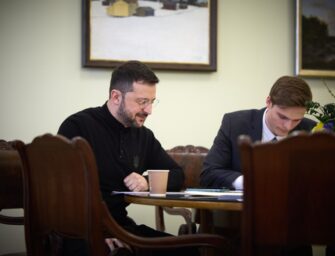
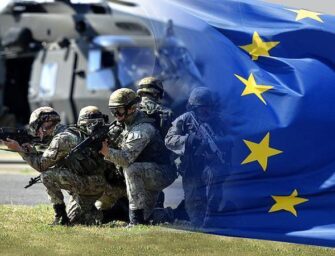











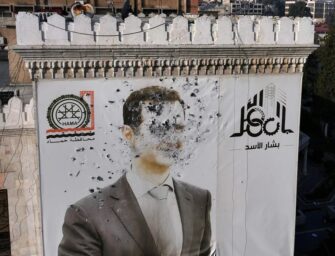
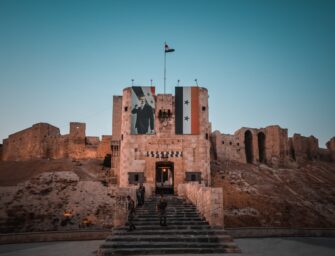







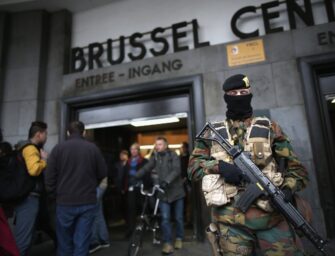



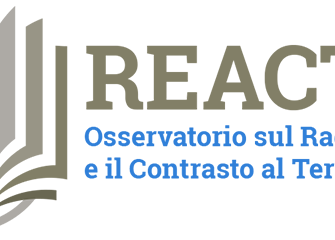
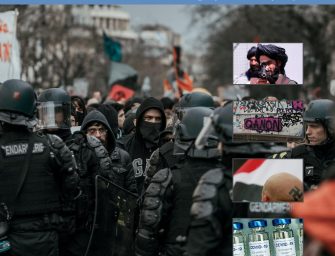




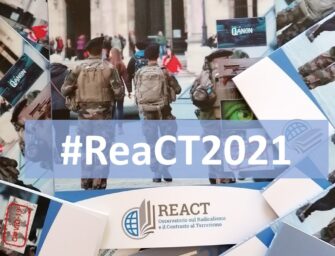

There are no comments
Add yours